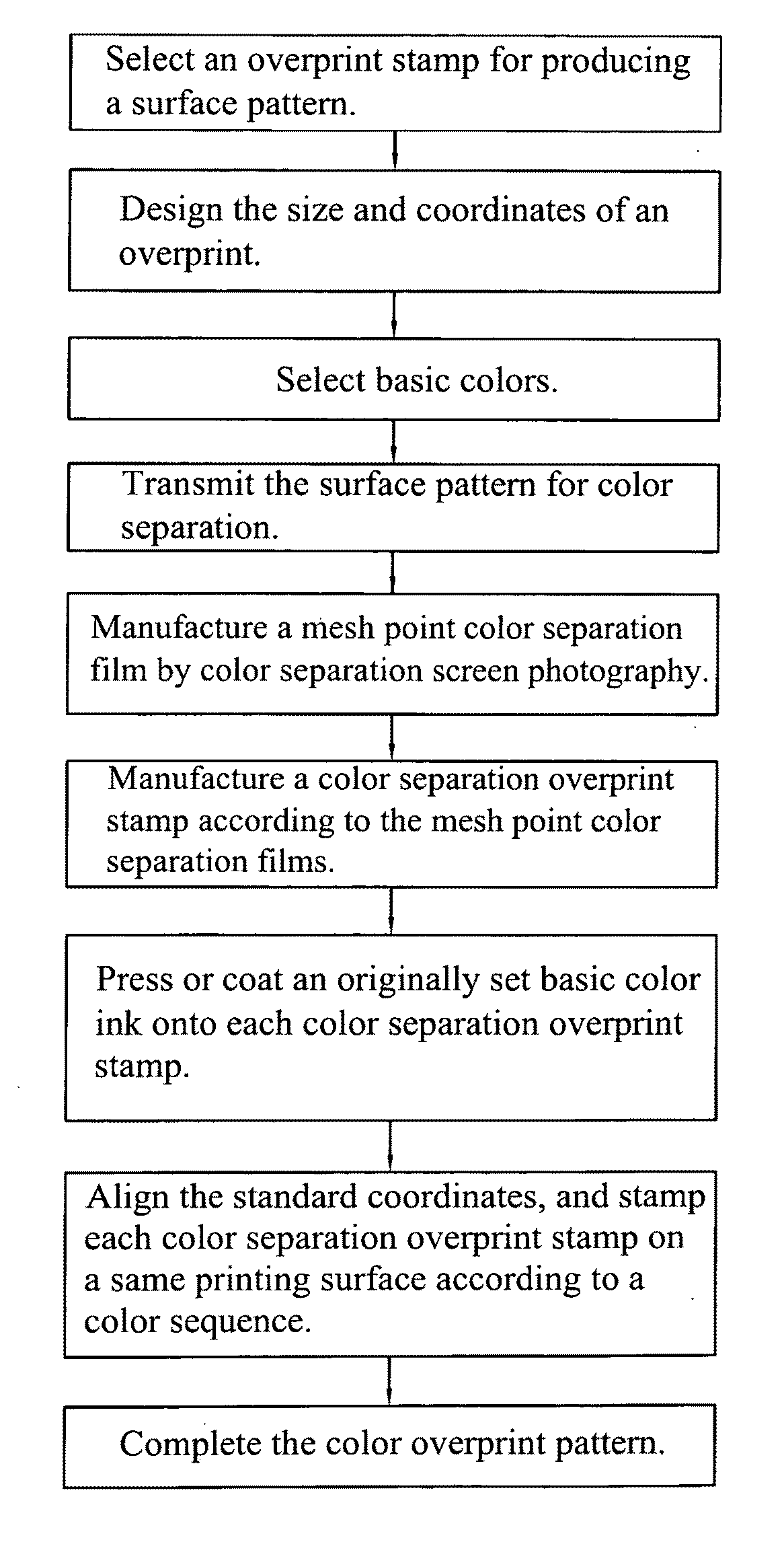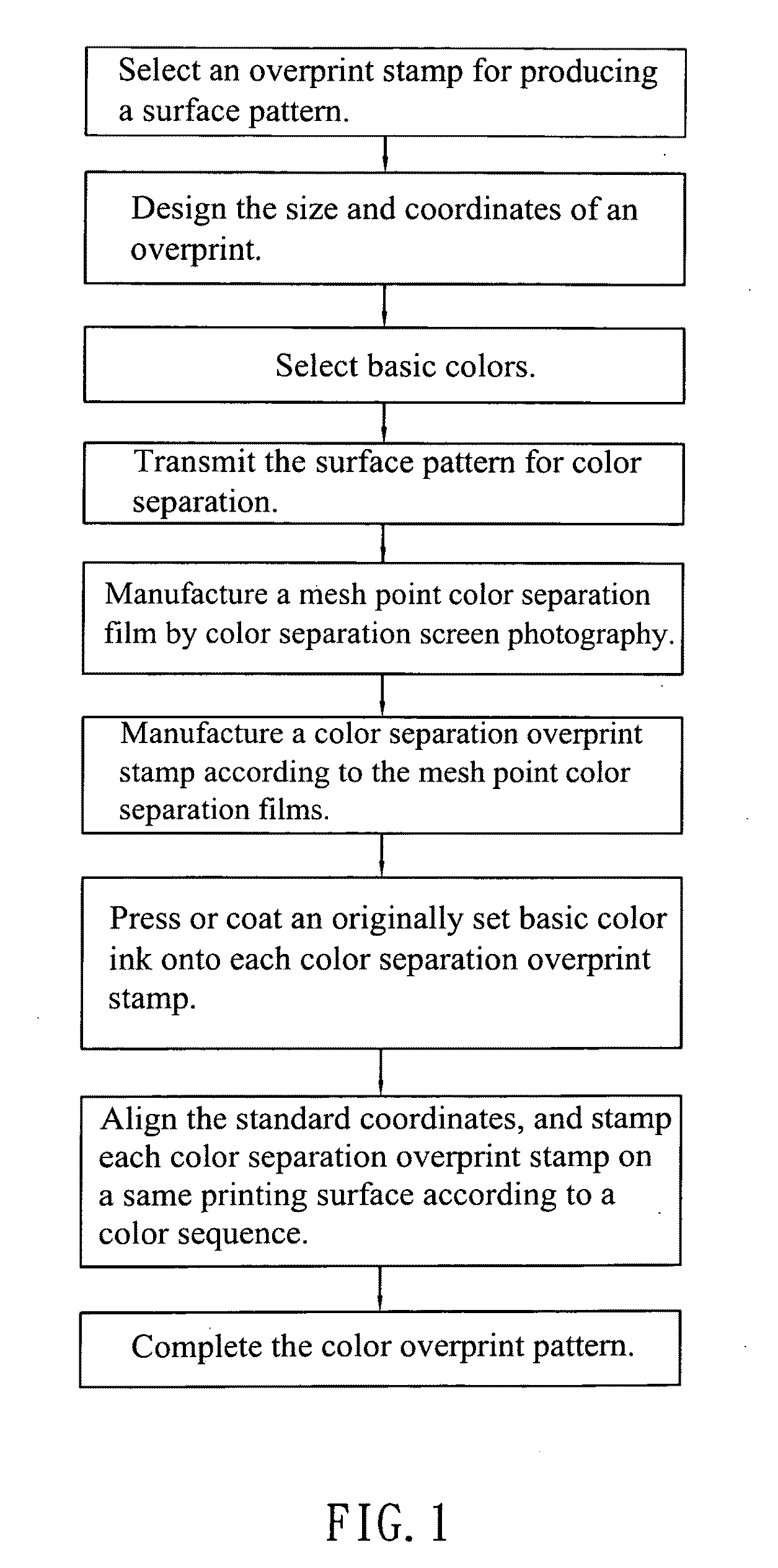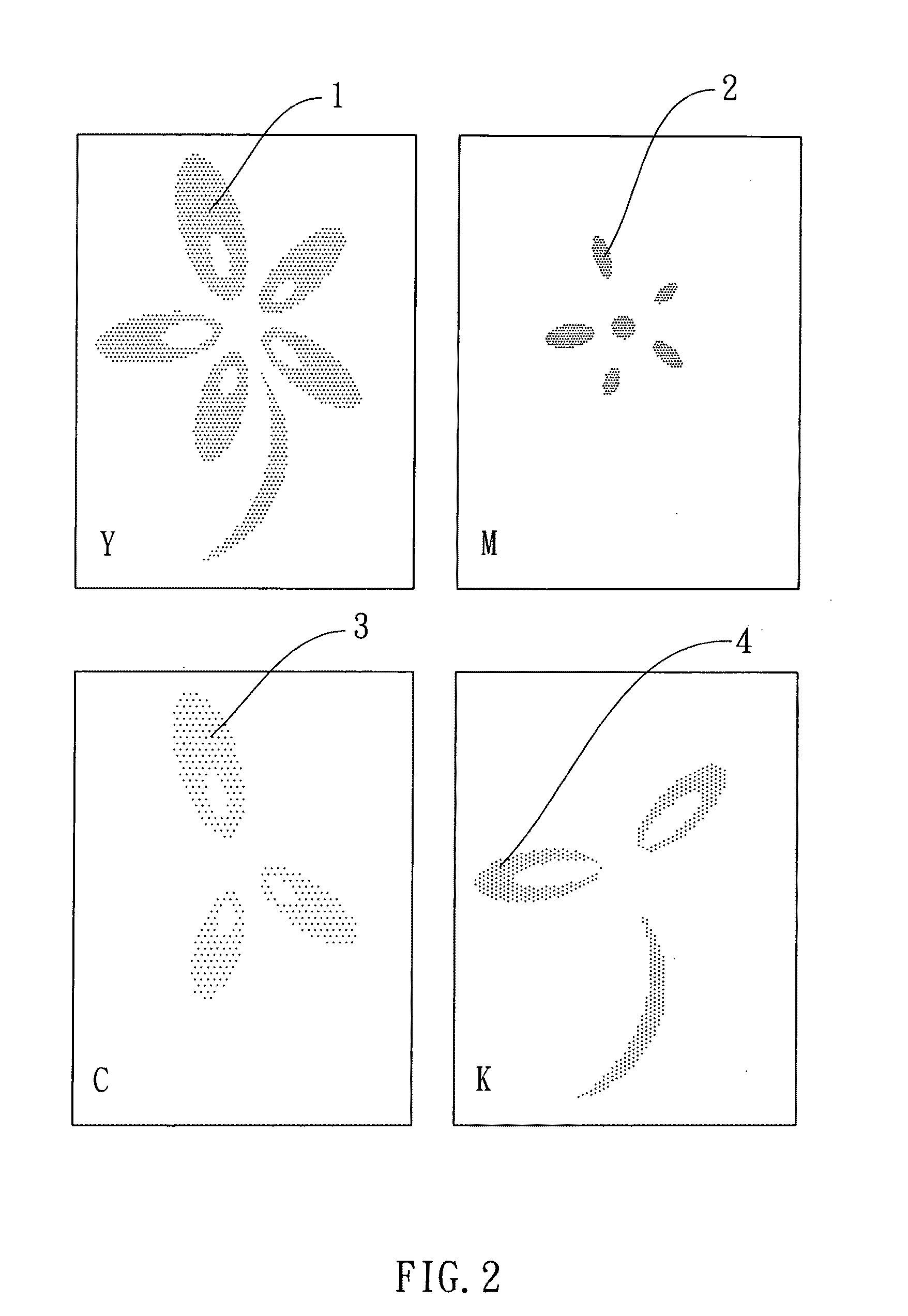Overprint stamp and method thereof
- Summary
- Abstract
- Description
- Claims
- Application Information
AI Technical Summary
Benefits of technology
Problems solved by technology
Method used
Image
Examples
Embodiment Construction
[0034]With reference to FIG. 1 for a flow chart of manufacturing an overprint stamp by using mesh points in accordance with the present invention, a surface pattern in any color can be used for manufacturing an overprint stamp and selected for making an overprint stamp of a specific color. After the surface pattern of a stamp and the basic color of an overprint stamp have been selected, the stamp is transparent, since many stamps are made of a transparent material. For opaque stamps, a positioning ruler, a ruler or a frame line are used as a reference line for the overprint of each overprint color-separation stamp having the same shape and the same size, and thus making the overprint very convenient.
[0035]The present invention includes important tasks such as the electronic color separation of the surface pattern and the screen photography for manufacturing color separation film surface patterns of overprint stamps in different colors, and each mesh point color separation film is ma...
PUM
 Login to View More
Login to View More Abstract
Description
Claims
Application Information
 Login to View More
Login to View More - R&D
- Intellectual Property
- Life Sciences
- Materials
- Tech Scout
- Unparalleled Data Quality
- Higher Quality Content
- 60% Fewer Hallucinations
Browse by: Latest US Patents, China's latest patents, Technical Efficacy Thesaurus, Application Domain, Technology Topic, Popular Technical Reports.
© 2025 PatSnap. All rights reserved.Legal|Privacy policy|Modern Slavery Act Transparency Statement|Sitemap|About US| Contact US: help@patsnap.com



